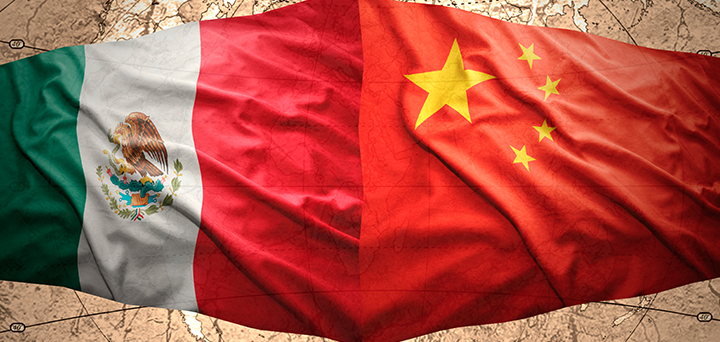Mexico and China, a tactical alliance

The Organisation for Economic Co-Operation and Development (OECD), in its Latin America Economic Perspectives 2016 inform, within the Development Center of the OECD, Latin America and Caribbean Economic Commission (CEPAL) and Development Bank of Latin America (CAF) assure that the relationship between China and Latin America is strengthening.
Today, China is leading an economic phenomena known as shifting wealth, which means the world’s economic center of gravity is moving to the emerging economies. Latin America must continue with OECD integration agenda and try to answer these economic challenges as China will continue to be the engine of global growth.
Because of this and the great economic recovering, Mexico has recently began a discussion in order to plan a strategy towards Asia, in spite of the increasing economic ties. This as part of the Mexican government’s priority of diversification, which has prompted it to look beyond the North American Free Trade Agreement (NAFTA) and towards Asia and China.
China is Mexico’s fourth business partner as it has made efforts to increase investments in here, even though this relationship has not been fully developed, the Mexican government should focus on coordinating specific items for a long-term agenda with China. Expectations in both countries are very high in terms of cultural, educational, and economic exchange in the short term. Both governments, however, should work on detailed and project-level support and evaluations to minimize recent failures and any effects on existing and future projects.
China appears as a challenge to Mexico’s export-oriented industrialization and its long-term strategy within NAFTA. Chinese exports to the United States, with the important exception of the automobile supply chain, have undermined Mexico’s export-oriented production, particularly in electronics and yarn-textile-garments.
These two countries are members of the Asia-Pacific Economic Cooperation, (APEC), which 3 principles are:
- Free commerce and investment
- Facilitate business
- Technical and economic cooperation
For the last 15 years, these two countries have been through different stages in their economic relationship. Mainly related because of a commercial competence because of the similarities in their structures, but since 2013 their bonds became closer as both countries agreed in an integral strategy for importing and exporting more perishable products.
Also, they signed 14 bilateral agreements with a value of 7.4md in order to create a financial fund of 2.4md for both nations to invest in energy, mining, high tech, tourism and scientific investigation. As well as an energy fund among Petroleos Mexicanos (Pemex) and three chinese companies to invest in facilities, and the exploration for natural gas and petroleum production. This will intensify the strategic dialogue between the two countries and share experiences on their respective upgrades and development strategies in order to generate greater understanding and mutual trust.
Part of this union has devices such as: the High Level Bilateral Work Group that supervises the commercial and investment promotion and the industrial and mining cooperation; the High Level Business Group, that sets commerce and investment with help of the private sector; and the High Level Investment Work Group that implements the bilateral investment mechanisms.
With this alliance, they agreed to implement an agenda to guide the course of bilateral cooperation, further recognizing that structural reforms undertaken by both countries generate a good environment to deepen in the Integral Strategic Association Mexico-China.

